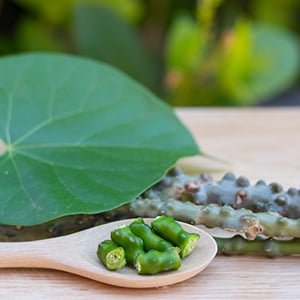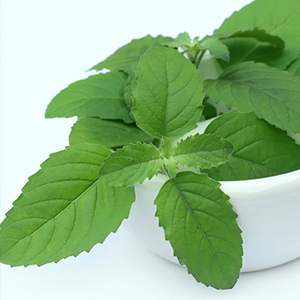A Nutty Delight for Health and Taste Kapiva A2 Desi Cow Ghee is a premium…
Read MorePeople often confuse Ayurveda with being a medicine or cure. But Ayurveda is actually a way of life. Adopting ayurvedic practices and food can be a game-changer in keeping up your health. And during flu season, nothing works better than simply boosting your immunity. It’s quite obvious – doesn’t it make sense to avoid falling sick, rather than curing the sickness later? We asked a few Ayurvedic experts from our consultation panel on what steps each one of us can take to fight illness. Read on to find out how a few simple Ayurvedic herbs can help boost your immunity and keep flu away:
GILOY

Giloy is known to be anti-pyretic in nature, which means it prevents or reduces fever. It is rich in antioxidants, so keeps your cells healthy, removes toxins and gets rid of diseases. Finally, it’s anti-inflammatory properties especially help tackle inflammation in the respiratory tract, thus fighting cough, cold and tonsil issues.
Expert Tip: Make sure you use the stem of the giloy plant, since that contains the most benefits. Also, a little known fact – the best giloy is the one that grows on neem trees. So be mindful which one you choose. Or you can our Tulsi Giloy Juice.
TULSI

Tulsi is considered sacred in the Indian subcontinent, and for good reason – it provides a multitude of benefits. Multiple clinical studies have shown that tulsi is very useful in boosting the immune response in humans. It’s anti-microbial properties help fight bacterial, viral and fungal infections effectively.
Expert Tip: It is important to partake of fresh tulsi or a kadha made out of fresh tulsi and not an extract. If you don’t have naturally growing tulsi at hand, consider having Tulsi Ark Drops.
AMLA

A powerhouse of Vitamin C, Amla boosts immunity like nothing else, literally. Higher than the vitamin C content of oranges and lemons, Amla is the second highest natural source of vitamin C. It also has a high content of tannin, making it a great antioxidant. Vitamin C, or ascorbic acid, is an important nutrient in combatting illness, since it repairs and maintains cells. And remember, there can be no such thing as too much Amla since vitamin C is water soluble, so the excess will be urinated.
Expert Tip: Traditional ways of juicing the amla use chemicals or heat, both of which destroy the nutrient. Try to get hold of a cold-pressed amla juice for best results. Also, if possible, consume more of the ripe, yellow-ish amla, since that has higher nutrition than the raw, green variety. If it’s not possible to juice your amla fresh, then try Amla Juice.
Compiled by Team Kapiva with inputs from Dr. Anand Dwivedi


We are a team of food scientists and Ayurveda experts at Kapiva. Our mission is to raise awareness and educate people on ancient principles and herbs found in traditional texts. We work together to develop the most comprehensive content on Ayurveda which is grounded in peer-reviewed, scientific research.

A Nutty Delight for Health and Taste Kapiva A2 Desi Cow Ghee is a premium…
Read More
Ashwagandha in Sanskrit means “smell of the horse” to correlate it with the strength of…
Read More
Do you tend to catch common illnesses like colds or other infections at the drop…
Read More
You must’ve heard the word ‘Immunity’ countless times during the past year. In fact, it…
Read More